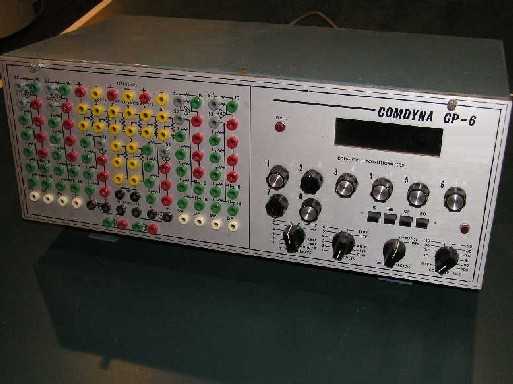





|
NAME |
GP-6 Analog Computer |
|
MANUFACTURER |
Comdyna |
|
TYPE |
Professional Computer |
|
ORIGIN |
U.S.A. |
|
YEAR |
1968 |
|
BUILT IN LANGUAGE |
None |
|
KEYBOARD |
Potentiometers and switches |
|
CPU |
No CPU but DC operational amplifiers |
|
RAM |
No memory |
|
TEXT MODES |
Digital volt-meter |
|
SIZE / WEIGHT |
25 kg |
|
POWER SUPPLY |
Built-in power supply unit |
|
Comdyna GP-6
|
|
Comdyna GP-6 |
|
potentiometers, the GP-6 has an overload indicator that signals when an amplifier is saturated, a mode for
accurately setting potentiometer values, a digital voltmeter for measuring external signals such as sensor
outputs, a capacitor shorting feature for zeroing integrators, complete banana plug access, current
limiting to protect circuitry, and convenient ground and ±10V references.
|
